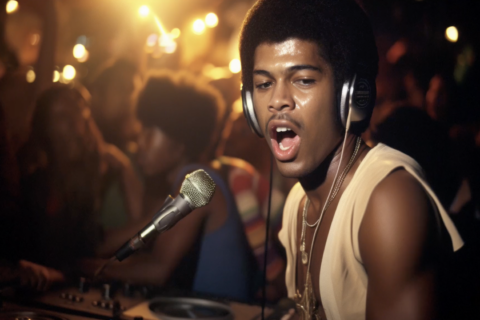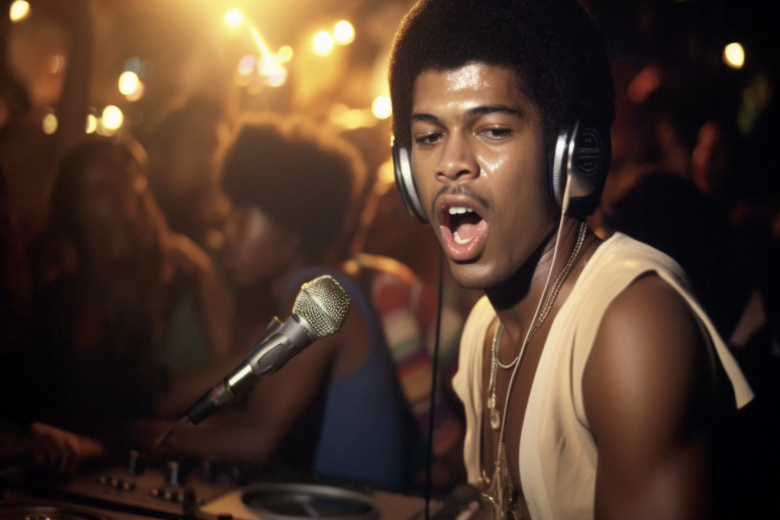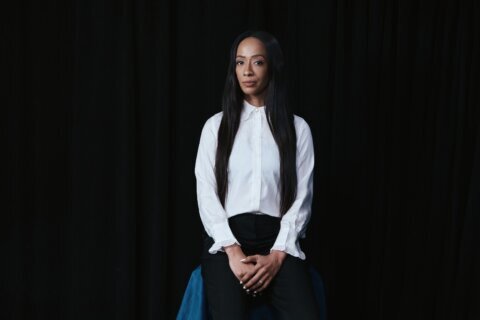UPDATE: The E Street Cinema screening was canceled after the publication of this article.

Hip-hop recently celebrated its 50th anniversary, but who really created the genre?
The new documentary “Microphone Check: The Hidden History of Hip-Hop” makes its D.C. premiere at the Landmark E Street Cinema downtown from July 19 through July 26.
“There’s a lot of misconceptions about hip-hop,” Director Tariq Nasheed told WTOP. “One of the biggest misconceptions is that we got hip-hop culture from Caribbean culture and all of these other different cultures. It came from the foundation of Black American culture in America cultivated in the Bronx.”
However, it wasn’t just birthed in a geographical place, it was birthed by the actual people living there.
“When people talk about hip-hop being born in the Bronx, they don’t humanize it,” Nasheed said. “They make it seem like it just fell out of a building and came up out of the concrete and slithered up out of the sewer. No, it came from people — so who were the people? We wanted to get into who the people were.”
The filmmaker interviews unsung heroes that influenced the culture, including breakdancers.
“Nobody ever gets into the first breakdancer, a gentleman by the name of Trixie, who’s in the movie,” Nasheed said. “His mother was an African ballet dancer and he wanted to be a tap dancer, but he didn’t have any money, so he created his own dances. We have another gentleman featured in the film who was an early breakdancer named Sasa. He was double jointed and would do these weird moves. That’s how a lot of these breakdance moves came.”
The documentary also explores the influence of graffiti artists on hip-hop culture.
“Modern graffiti was started in the 1960s by a brother named Cornbread out of Philadelphia,” Nasheed said. “He was the first person to use a whole city landscape as his canvas, and then that caught on in New York, so we’re telling everybody’s stories, he’s in the film by the way, so that’s what we wanted to talk about, those stories.”
Of course, the film interviews the pioneering emcees from Melle Mel to Grandmaster Caz.
“We have one of the first people to host a hip-hop party and rhyme at a hip-hop party, that’s Coke La Rock, he’s the first hip-hop emcee,” Nasheed outlined. “We have the first female hip-hop emcee, a sister by the name of Sha-Rock, so we’ve got a lot of the pioneers in the story to tell their story firsthand. No one was before these pioneers.”
He said it was important to flesh out the entire history of the ’70s rather than jumping ahead.
“A lot of times when people do hip-hop documentaries, they’ll touch on Kool Herc’s party in 1973, then they’ll skip all the way to the ’90s to Biggie and Tupac,” Nasheed said. “We wanted to focus on the ’70s. … Somebody who’s overlooked all the time is DJ Hollywood. … Many people consider him a disco rapper DJ, but he influenced the Melle Mels and The Sugarhill Gang — Big Bank Hank basically was a carbon copy of DJ Hollywood.”
Still, when it comes to actual recording, the first official hip-hop record is pretty unanimous.
“The first technical hip-hop record would be The Sugarhill Gang ‘Rapper’s Delight’ record [in 1979],” Nasheed said. “Now, there were records where people were rapping going back all the way to the 1960s. There was a record by a gentleman by the name of Pigmeat Markham, he was a comedian and did a record called ‘Here Comes the Judge.’ He was rapping over a funk beat in 1968 and many other rappers were influenced by that particular record.”
Nasheed wanted to make the documentary’s filmmaking style itself as hip-hop as possible.
“I was real meticulous about the way we shot the film,” Nasheed said. “We have a lot of very cool graphics, we have a lot of stock footage, a lot of unseen footage. We really made everything fast, everything is hitting you very quickly. The movie is two hours and 20 minutes, but it goes by so fast, you’re getting hit with so much stuff that you don’t even notice it. Everything is shot in 4K, 5K, so we made sure the visuals are extremely crisp.”
The film also draws parallels between today’s Kendrick Lamar vs. Drake battle and the first rap beef ever between Busy Bee vs. Kool Moe Dee. Between past and present, who does Nasheed consider to be the genre’s G. O. A. T.?
“I would say Rakim,” Nasheed said. “Rakim changed the whole trajectory of hip hop, changed everybody’s style, made everybody step their pen game up, made everybody change their cadence, made everybody change their flow. That brother embodied every element of hip hop, phenomenal, phenomenal guy. I don’t think anybody has impacted modern rap and hip hop the way that Rakim did with his cadence and style. He really changed the game.”
“Microphone Check” is just the latest creative effort by Nasheed, who has become something of a Renaissance man across multiple disciplines, working as a fashion designer, penning The New York Times bestseller “The Art of Mackin’,” and even producing narrative feature films like Spike Lee’s “Da Sweet Blood of Jesus” (2014).
“I try to mix it up,” Nasheed. “You’ve got to these days!”
Listen to our full conversation here.
Get breaking news and daily headlines delivered to your email inbox by signing up here.
© 2024 WTOP. All Rights Reserved. This website is not intended for users located within the European Economic Area.








